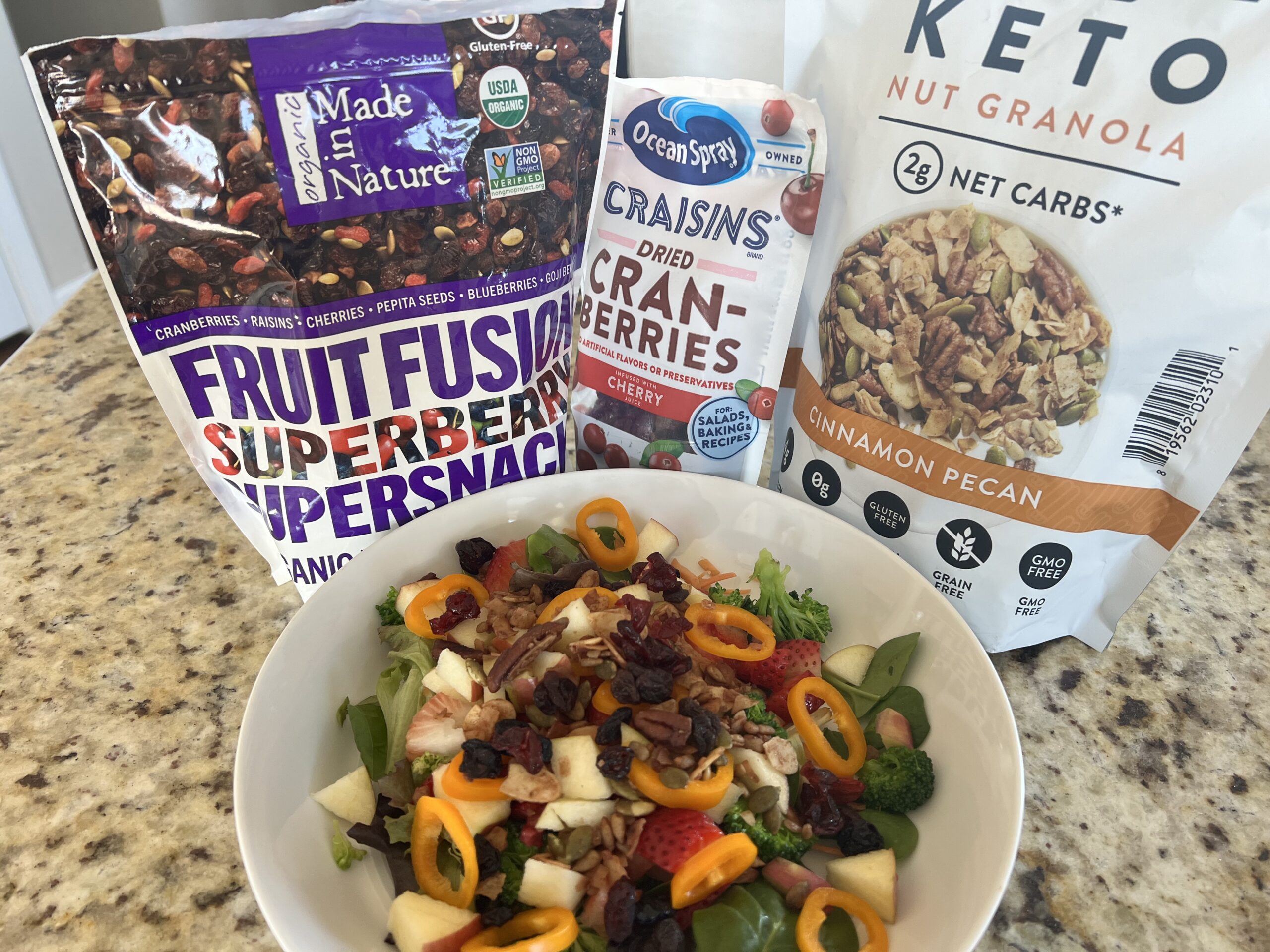Eating for Health –
Knowledge is Power. Below you will read about eating a variety of whole food plants and their nutritious colors that are made up of healthy chemical compounds. These help to fight disease and sickness and provide a basis for your healthy gut microbiome improving a better quality of life and immunity. Listen in on the latest reputable studies and fascinating new research being done. Also find activity ideas, recipes and links provided to create an action plan. Knowledge is great! When put into action, it becomes Power!
My Story. I started being the most proactive about my health when I was a mom in my late 20’s. I wanted to take control of my diet and increasing hormonal migraines. Over the years, my health and migraines have negatively affected my life, often reflecting the stage in my life based on my central focus. I consider myself a migraine survivor. That phrase may seem to take away the much earned meaning of being a cancer survivor, and it may hit at the heart for many of us, but, it does offer a glimpse of how difficult it can be to live with migraines as I have. Why do you want to be more healthy?
The Best Cure for Disease and Sickness
As of now, there is no cure for migraines. For many, there is no cure for cancer either. There is also limited help for living with disease and other extremes. However, there is something that each of us can do to decrease the likelihood of being affected by such difficult health problems and can increase survival rates of living with diseases and issues that decrease the quality or longevity of our lives.
Nutrition’s Dark Matter: The New Science of Eating
BBC The Food Program
I often study the most recent research on health and diet through articles, news and podcasts by specialists and scientists. This post is based off of a BBC podcast on The Food Program. Most of us have heard that we need to “eat a rainbow” and choose a variety of foods and colors in our diets to optimize the benefits we take into our bodies as we eat for our best health.
We have also all heard about taking multi vitamins that include what we may not be getting enough of. There are also long aisles full of supplements that are shown to help with specific ailments. This podcast episode takes us deeper into the why we benefit most from eating a variety of whole-food plants and the chemical makeup that is so important to gut health, and therefore, overall health.
Eating a variety of plants
Eating a variety of chemicals and nutrients with the most benefits. Dark colors will typically supply the highest nutrient density a plant has to offer, having a higher concentration and variety of polyphenols. Berries with seeds offer another dense choice for the best defense chemicals. The saying “the bitter the better” is true in terms of healthy properties as well.
Eat a Rainbow of Colors
An easy way to get a variety of plants is to choose to eat a variety of colorful options. Choosing a vegetable or plant of the same kind, but in a different color, will also give different protecting agents in your diet for promoting a variety of healthy compound chemicals that benefit in additional ways. As I taught in my elementary school health class, “Eat a rainbow” every day, and it’s because different colors offer different advantages.
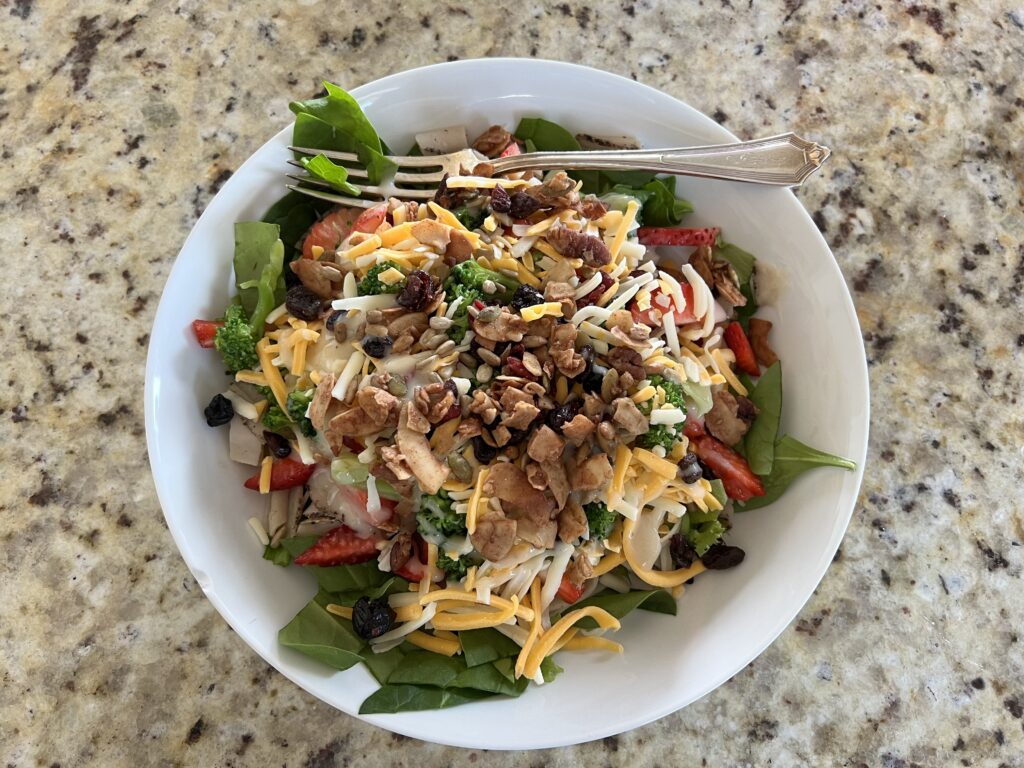
Vitamins and Processed Foods Processed foods and vitamins or supplements are stripped of most of the many important and beneficial food chemicals from the original source of the whole plant. Supplements can give benefit as well but often is degraded and loses its potency in the process and storage. Fiber is lost in processing of these options which is needed for systems related to gut health. Offering the most benefit and advantages for health is eating 30 different whole-food plants in the spectrum of colors, fighting off diseases, improving the immune system, brain function and for whole-body health.
Gut Microbiomes
The newest research for health is in the gut microbiome and in all of the new chemicals being identified in foods. The studies suggest that gut health seems to positively compensate for many inherited DNA deficiencies. You CAN have control over your health regardless if you have inherited genetic challenges. Of course there are other factors in being your healthiest, stronger immunity such as a healthy weight, exercising, limited alcohol use and not smoking, but a great advantage in eating a variety of plant foods has been strongly shown since Covid-19 broke out is related to the healthy gut microbiomes.
It is easier than you think
Add Mix-Ins It’s easier than you might think to add more variety of plants in your diet. Start thinking about adding multiple varieties, creating mix-ins or toppings with a blend of seeds, berries and nuts. Add spice mixes to your regular recipes and salads, as well as a mixed vegetable with a few different kinds and colors for the side dish instead of just one vegetable with the main course as the traditional fare.
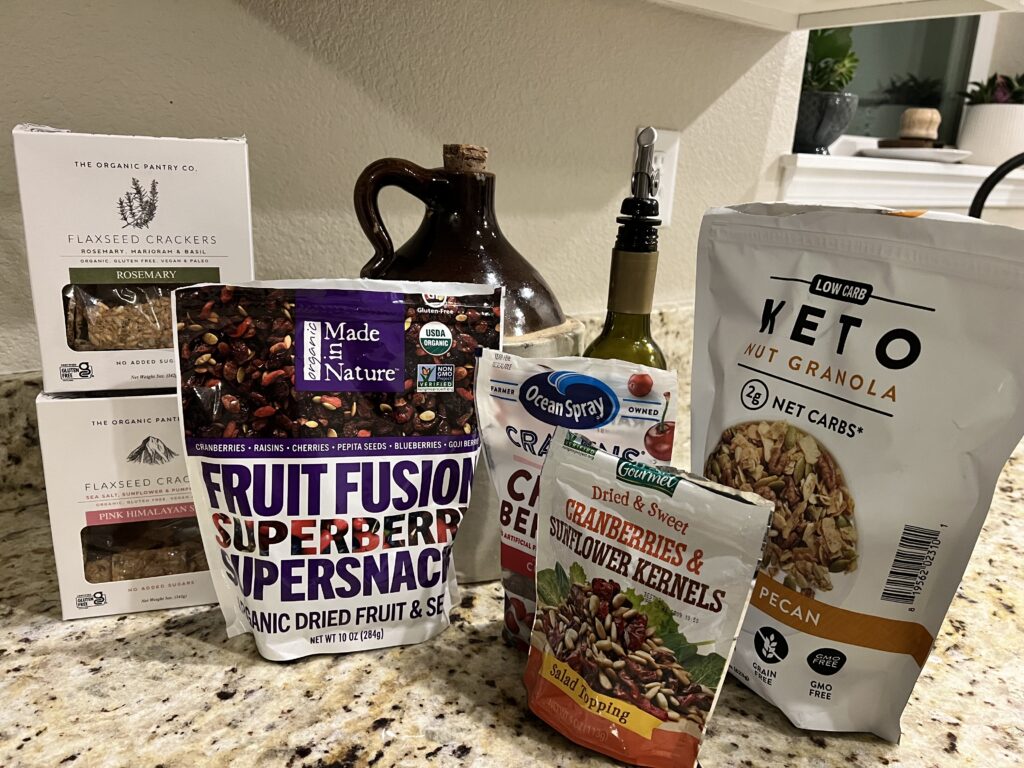
This nut granola is sooooo good that I had to highlight it separately! I found it on Amazon and Sam’s Club and Walmart. As you can see, there’s lots of plant sources mixed in one nice package.
Important Covid-19 Discoveries
Without any doubt, it was discovered through an analysis of thousands of people’s diets and their gut microbiomes, and the data showed that the top two symptoms of Covid-19 were a loss of smell and taste. That same app which was originally created as a nutrition app, called ZOE, was changed and used to help understand Covid-19.
Improve Your Immunity
One of the main conclusions from this research of millions of people was that the quality of diet was an influence on the severity of Covid; a link between food and health. They looked at all of the factors in the data of the American Gut Project with 11,000 people and identified the highest factor that came up was a diet of 30 different plants per week. Patients faired better with Covid-19 as this top factor and it didn’t matter if a person was vegan, an omnivore, pescetarian or whatever other diet was eaten.
The Sweet Spot for Health is eating a diet of a variety of plants, vegetables and fruits including nuts, seeds, herbs and spices, and aiming for 30 different varieties per week. This was the sweet spot for either not developing the sickness or not succumbing to its severity as seen in those who had a limited or poor diet.
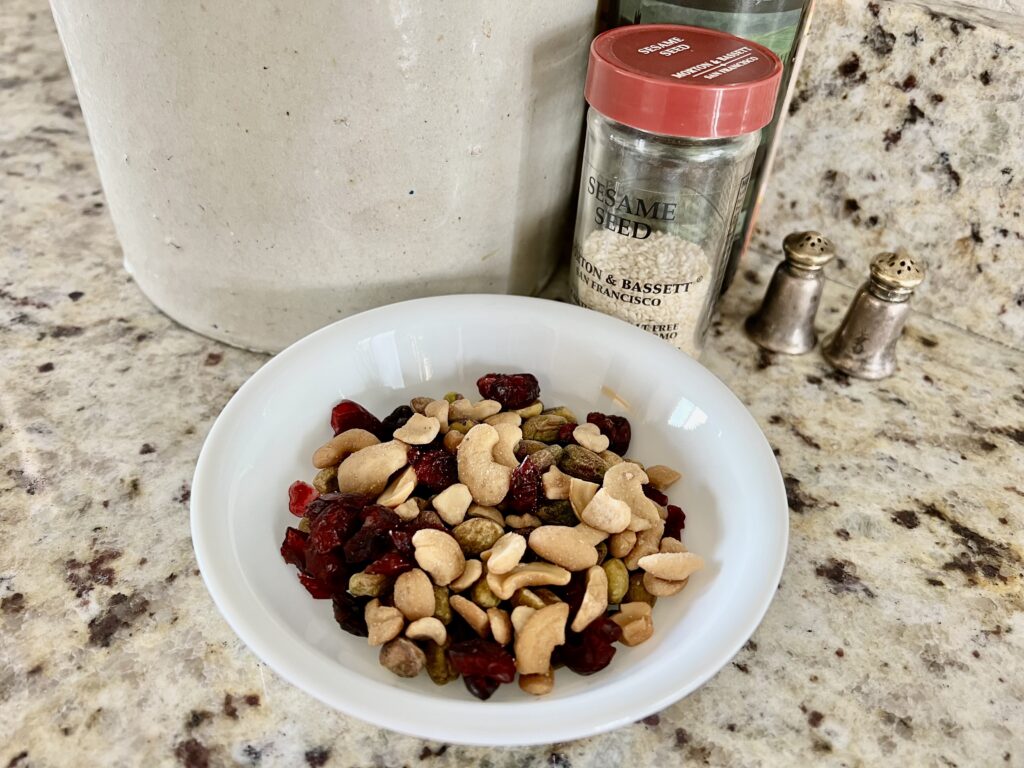
BBC The Food Program
Nutrition’s Dark Matter: The New Science of Eating This year’s winner of the Derek Cooper Lifetime Achievement award, scientist Professor Tim Spector explains the latest research into what, how and when we should be eating, from the power of polyphenols to the mysteries of our gut microbiomes. (I do not get a commission for reviewing this amazing episode.)
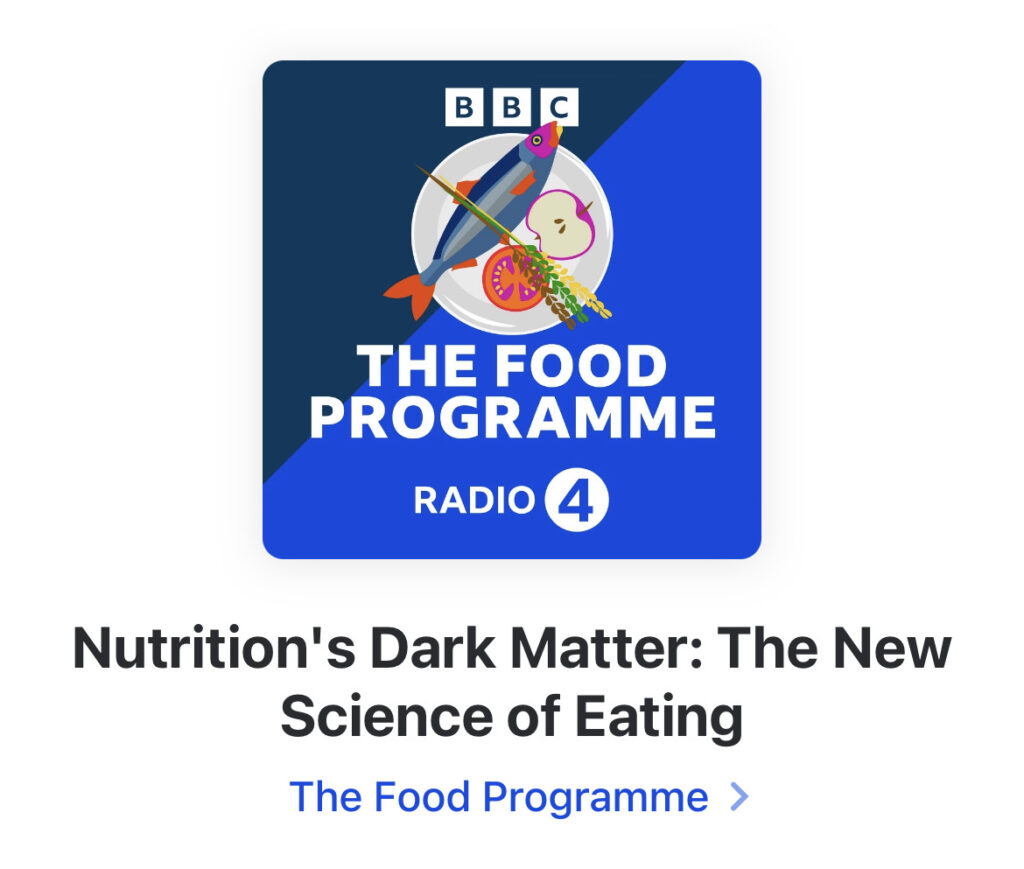
Create Your Activity
Prepare Beforehand:
Prepare overnight oats mixture and soak in the refrigerator the night before. Provide the toppings and ingredients that you want to offer for the varieties you want to supply for the activity to be eaten there or for them to take home.
Prepare Colorful Toppings in bite sized pieces. Provide a variety of fruits, seeds, nuts and even shredded vegetables and herbs to make unique blends of flavors and a rainbow of colors.
Decide On A Story to Tell Tell a story around health to promote a connection to the desire to eat a more healthy diet.
Print Beforehand Print paragraphs and sentences from this post for eating a variety of whole-plant foods aiming for 30 different sources each week. Purchase different colors of balloons to represent different colors of plants, vegetables and fruits. Inflate the balloons and insert the papers with information about healthy eating. You may also want to print a copy of the recipe to give out.
Attention Activity and Lesson
Balloon Lesson Attention Activity An attention activity brings the focus on the topic in an interactive way to set up for inclusion with a fun introduction. It can be in addition to a lesson or it can be a part of the lesson. This attention activity does both and it helps to get members moving since that increases blood flow, brain activity and retention, interest and connection to each other 💞 Take turns identifying a plant food in that color of balloon before popping and reading the paper from inside.
Provide Tally Sheets. I have created check off charts for myself to help me to keep track as I rotate my goal to eat 30 different plants per week. I have been excited to find that, YES, I can accomplish this when I add a little focus. It is actually quite fun to see the different ways I can include a whole new set of 30 the next week if I do just a little planning! Describe how to use the sheets and pass them out. Choose to use both tally sheets as an option or just one.
Scoop overnight oatmeal mixture into cups. Give a cup of prepared oatmeal to each participant for them to add toppings. Challenge all to include an array of colors and ingredients, such as seeds and nuts too, dried berries, coconut, banana chips etc. Emphasize that a variety of different kinds of plants and colors is key to overall health in eating choices. It might be fun to have each person create a name for their personal mixture like “My Blueberry Pie” or “Rainbow Rendition” or Strawberry Surprise”.
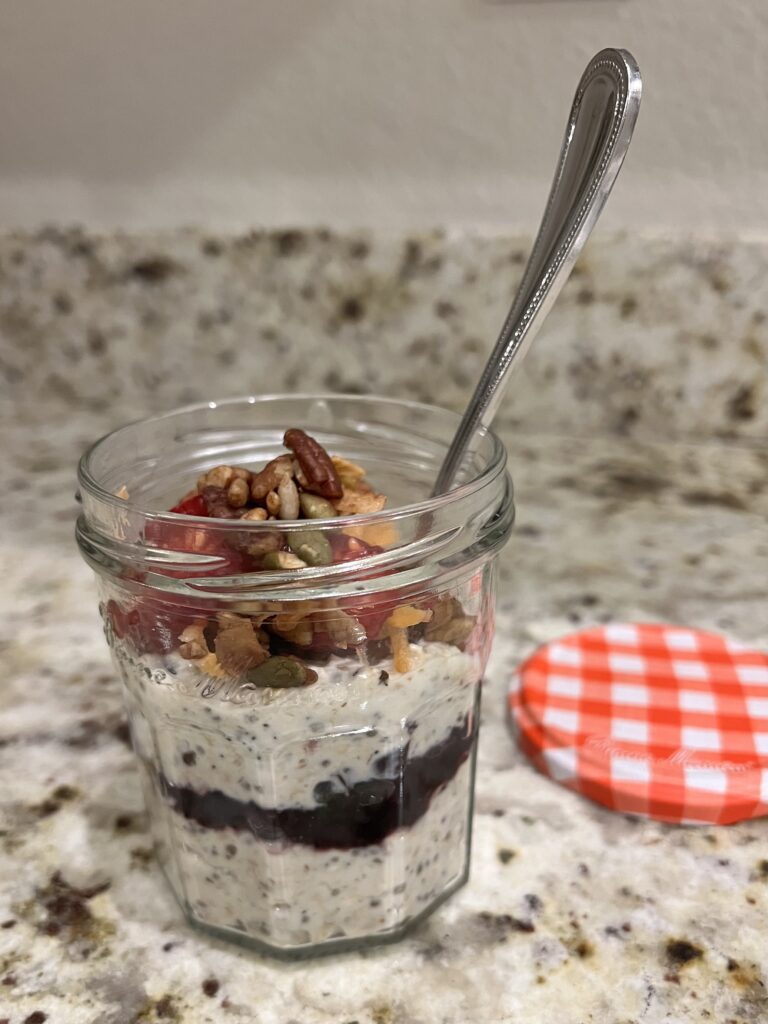
Overnight Oat Cups Recipe
I adjusted a general no-bake, overnight oats recipe to add more variety and healthy ingredients. The base recipe can last up to four days in the refrigerator and also is great from the freezer. There is also a lot a sweetener which you can adjust or add in later when making the individual cups. Jams and preserves also make for a great substitute for sweetener. They are so yummy I might even call it a dessert! This batch makes about 6 cups.
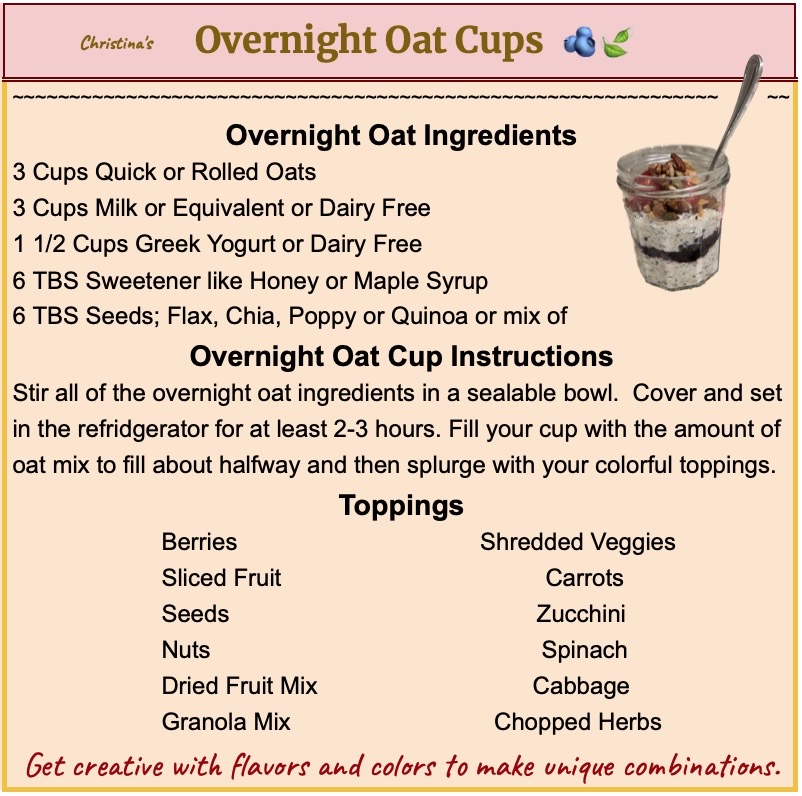
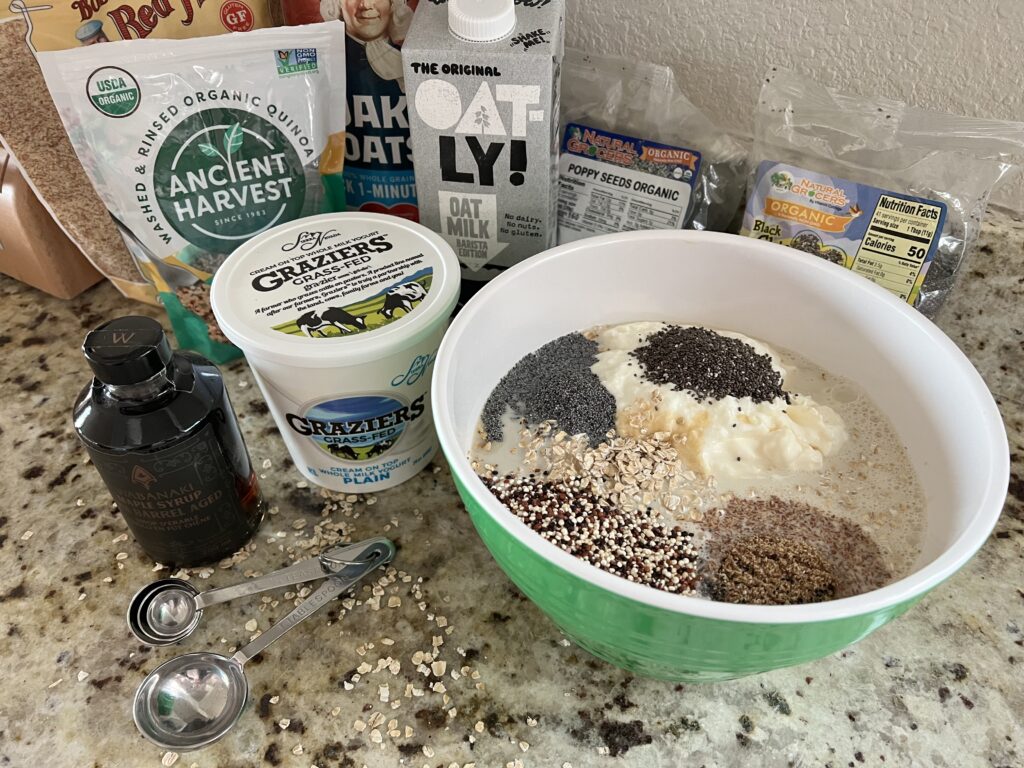
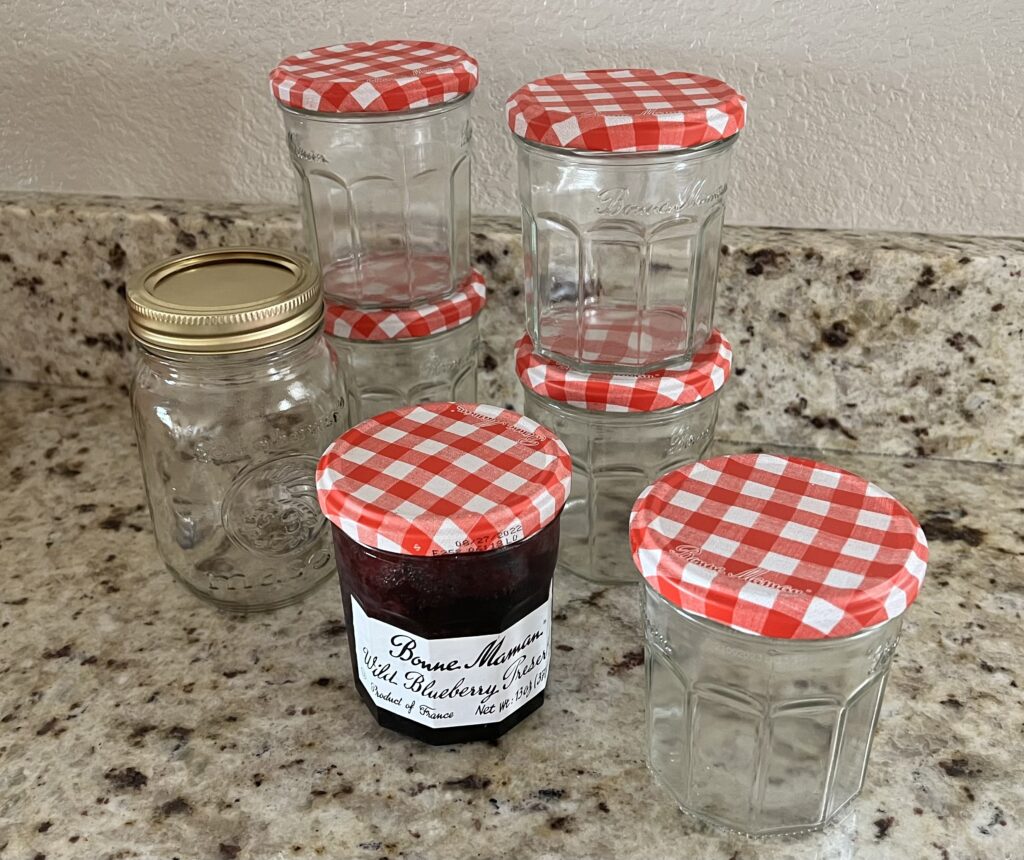
I used specialty ingredients for the overnight oat mixture but this recipe is versatile so don’t be afraid to substitute similar ingredients. I encourage experimenting with the ingredients you like.
I re-used these jam jars since they make the perfect sized snack or light lunch for me. Mason jars come in many sizes though and can be purchased inexpensively as well.
You can also tailor the ingredients to the activity and to any allergies or aversions. The yummy overnight oat cups make for a fun way to be creative and add more whole-food plants to your diet and tally sheets. These combinations are so good. The overnight oat mixture base will last in the refrigerator for up to four days or freeze.
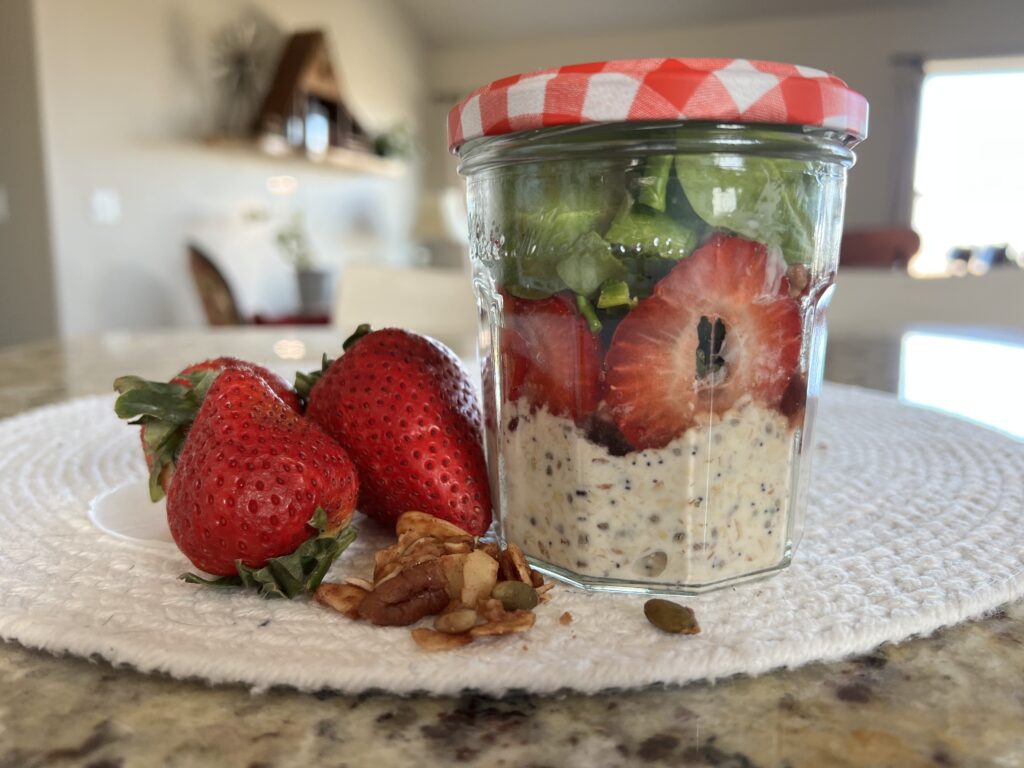
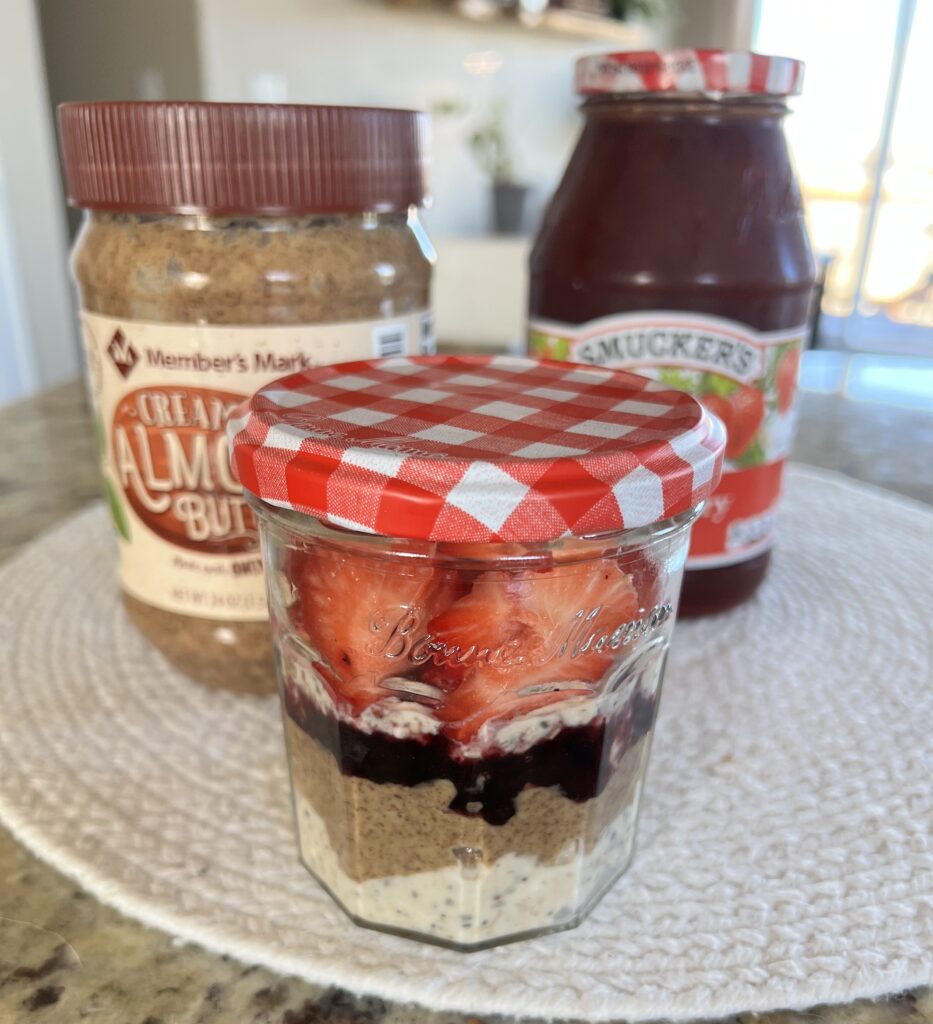
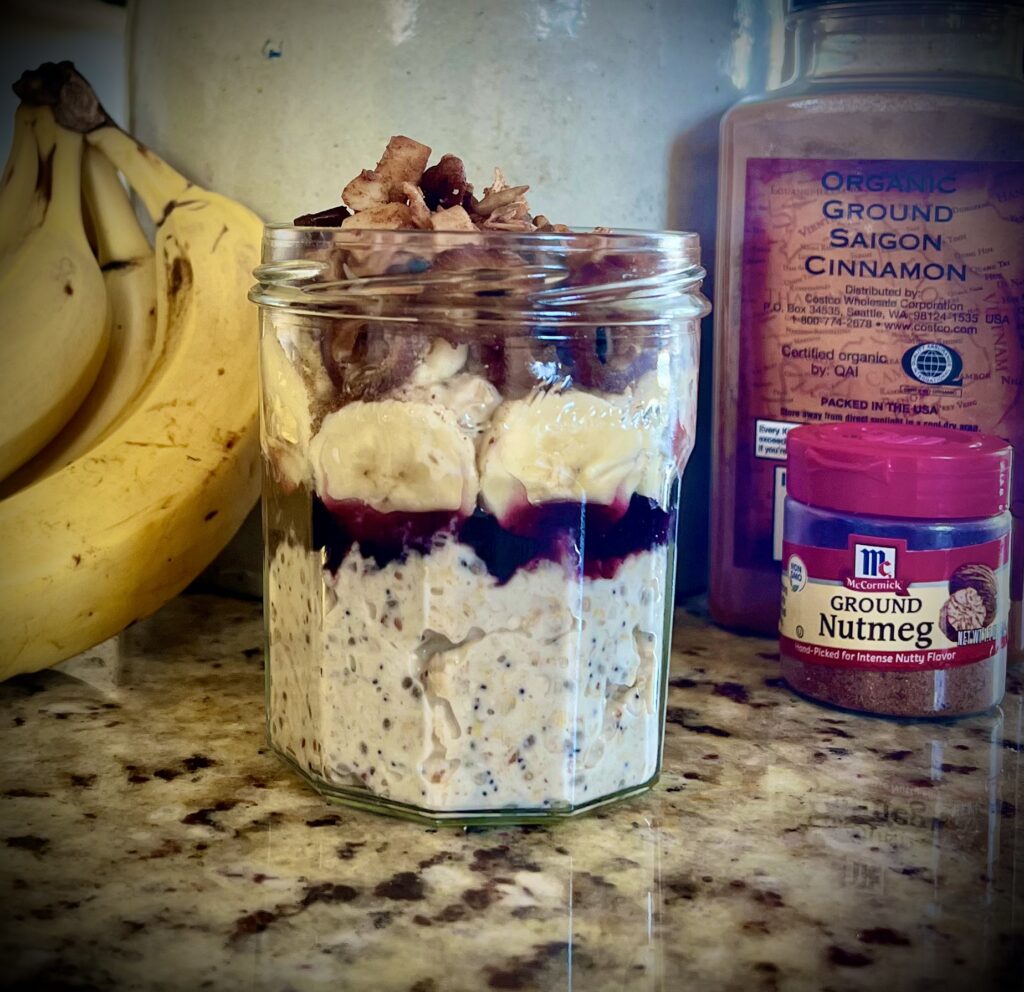
Once again, depending on the occasion you may choose a container in any size or style over another. There are a lot of choices as seen below as well as some quick Amazon links for an activity.
Eat 30 Different Whole-Food Plants Each Week
Tally Chart for 30 Different Plants
I suggest finding at least one plant in each category so that you’re not getting all of your plants in, let’s say, just fruits , because dark green, leafy plants contain amazing benefits that can’t be gotten from a fruit. Likewise, if you just go for all 30 being in the leafy vegetable section, the benefits from a variety of fruits will be lost as well. Research has just gotten going into discovering chemicals in different plants and how they benefit the immune system and fight diseases. For a simpler way to keep track of eating a variety of whole food plants, choose to add up your colors instead with the following tally chart. This is also a great way to include your children and excitement around eating more variety and especially in eating whole-plant foods.
Eat A Rainbow of Whole Plant Colors
Tally Chart for a Colorful Count
I also included my chart for eating a rainbow as it is easy to miss purples and blues which have their own amazing properties and benefits. I encourage us all to strive for more healthy variety in eating a rainbow of plants each week! 🥗🌈
Ideas for Children
Here are some ideas for including more colorful whole plant foods into your children’s diets at the non-profit Whole Kids Foundation.

